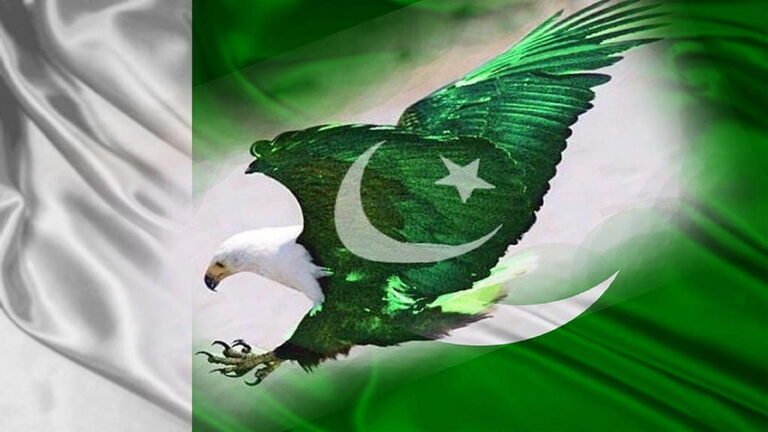Introduction: A Nation is Born
14 August 1947 marks one of the most defining moments in South Asian history the creation of the Islamic Republic of Pakistan. This day symbolizes the end of British colonial rule and the birth of a new nation designed to protect the cultural and religious identity of Muslims in the Indian subcontinent. Every year, Pakistanis across the globe celebrate Independence Day with immense pride, reflecting on the sacrifices and struggles that paved the way for the country’s creation.
The Road to Independence
Early Struggles Against Colonial Rule
British rule in India spanned nearly two centuries, beginning with the East India Company in the 18th century and continuing under direct Crown administration after the 1857 rebellion. Over time, political movements like the Indian National Congress and the All India Muslim League rose to challenge imperial control.
The Lahore Resolution and the Vision for Pakistan
The idea of Pakistan was formally proposed in the Lahore Resolution of 1940. Spearheaded by Muhammad Ali Jinnah, the resolution called for an independent state where Muslims could freely exercise their religion and safeguard their rights. Jinnah’s vision stemmed from the concern that Muslims in a Hindu-majority India might face political and social marginalization.
The Partition of India: Triumph and Tragedy
Widespread Migration and Communal Violence
The creation of Pakistan required the division of British India into two sovereign states: India and Pakistan. Pakistan declared independence on 14 August 1947, one day before India, to coincide with the 27th of Ramadan, a significant date in the Islamic calendar. The partition triggered massive population movements, as millions of Hindus, Muslims, and Sikhs crossed newly drawn borders to join their respective nations.
Human and Economic Toll
The scale of displacement was staggering between 10 to 15 million people migrated, making it the largest human migration in history. Communal riots claimed the lives of an estimated 1 to 2 million people, leaving countless families fractured and communities devastated. Economically, Pakistan inherited only 17.5% of India’s financial resources, despite comprising nearly one-third of the subcontinent’s land.
Key Figures Behind Pakistan’s Creation
Muhammad Ali Jinnah: Father of the Nation
Jinnah’s unwavering leadership and diplomatic skill earned him the title of “Quaid-e-Azam”. He played a central role in articulating Muslim concerns and negotiating Pakistan’s formation with the British and Indian leaders.
Lord Mountbatten and the British Role
As the last Viceroy of India, Lord Mountbatten oversaw the transfer of power. His decision to move the independence date from June 1948 to August 1947 accelerated the partition process, which, while historic, contributed to logistical chaos and violence.
Gandhi, Nehru, and the Indian Perspective
Leaders of the Indian National Congress, including Mahatma Gandhi and Jawaharlal Nehru, advocated for a united India. Despite their efforts, religious and political divisions made partition inevitable.
Aftermath and Legacy
Early Challenges of a New Nation
The fledgling state faced immense challenges integrating princely states, managing millions of refugees, and addressing economic instability. Territorial disputes, particularly over Jammu and Kashmir, led to the first Indo-Pakistani war in 1947-48.
National Growth and Modern Celebrations
Despite early hardships, Pakistan has evolved politically, economically, and culturally. 14 August is celebrated nationwide with flag hoisting ceremonies, military parades, cultural events, and speeches, serving as a reminder of the resilience and vision of its founders.
Facts and Figures About 14 August 1947
-
Population Displacement: 10–15 million people.
-
Casualties: 1–2 million lives lost.
-
Territory: Two regions West Pakistan (current Pakistan) and East Pakistan (now Bangladesh) separated by 1,600 km of Indian territory.
-
Economic Challenges: Inherited only 17.5% of subcontinent’s resources.
-
First Independence Day: Celebrated in Karachi with Muhammad Ali Jinnah sworn in as Governor-General.
How Pakistan Celebrates Independence Today
Modern celebrations include:
-
Patriotic flag hoisting and parades
-
Cultural performances and national songs
-
Public speeches and commemorations of historical sacrifices
-
Fireworks and community events
FAQs
Why is 14 August 1947 significant?
It marks Pakistan’s independence from British rule and the realization of a separate homeland for Muslims.
Why is Pakistan’s independence celebrated on 14 August instead of 15 August?
14 August aligns with the 27th of Ramadan, and the official transfer of power in Karachi took place on the evening of that day.
What were the consequences of partition?
Widespread communal violence, mass migration, loss of lives, and ongoing India-Pakistan tensions, especially over Kashmir.
Who were the key figures in Pakistan’s creation?
Muhammad Ali Jinnah, Lord Mountbatten, Mahatma Gandhi, and Jawaharlal Nehru were central to the independence negotiations and outcomes.
How is 14 August celebrated today?
Through patriotic ceremonies, parades, cultural programs, and speeches reflecting on Pakistan’s history and achievements.
Conclusion
14 August 1947 is not just a historical date it symbolizes the dreams, struggles, and resilience of millions who fought for Pakistan’s creation. Despite the tragic consequences of partition, Pakistan continues to thrive as a nation that celebrates its independence, cultural identity, and the vision of its founders every year.
